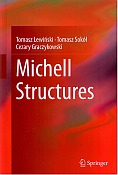|
On the Calibration of a Numerical Model for Concrete-to-Concrete Interface |
 |
 |
 |
Sławomir Dudziak, Wioletta Jackiewicz-Rek, Zofia Kozyra, On the Calibration of a Numerical Model for Concrete-to-Concrete Interface, Materials 2021, 14(23), 7204;
online: https://doi.org/10.3390/ma14237204
Abstract
The study was devoted to the numerical modelling of concrete-to-concrete interfaces. Such an interface can be found in many modern composite structures, so proper characterisation of its behaviour is of great importance. A strategy for calibration of a model based on cohesive finite elements and the elastic-damage traction–separation constitutive law available by default in the Abaqus code was proposed. Moreover, the default interface material model was enhanced with the user-field-variables subroutine to include a real strength envelope for such interfaces. Afterwards, the modelling approach was validated with numerical simulation of the most popular tests for determining the strength characteristics of concrete-to-concrete interfaces: three-point bending beam with a notch, splitting bi-material cubic specimens, and slant-shear tests. The results of own pilot studies were used as well as those reported by other researchers. The performed simulations proved the accuracy of the proposed modelling strategy (the mean ratio of ultimate forces obtained with numerical models and from experiments was equal to 1.01). Furthermore, the presented examples allowed us to better understand the basic test methods for concrete interfaces and the observed mechanisms of failure during them. |
|
The isotropic material design of in-plane loaded elastic-plastic plates |
 |
 |
 |
S. Czarnecki, T. Lewiński, The isotropic material design of in-plane loaded elastic-plastic plates, Materials, 2021, 14(23), 7430;
online: https://www.mdpi.com/1996-1944/14/23/7430
Abstract
This paper puts forward a new version of the Isotropic Material Design method for the optimum design of structures made of an elasto-plastic material within the Hencky-Nadai-Ilyushin theory. This method provides the optimal layouts of the moduli of isotropy to make the overall compliance minimal. Thus, the bulk and shear moduli are the only design variables, both assumed as non-negative fields. The trace of the Hooke tensor represents the unit cost of the design. The yield condition is assumed to be independent of the design variables, to make the design process as simple as possible. By eliminating the design variables, the optimum design problem is reduced to the pair of the two mutually dual Linear Constrained Problems (LCP). The solution to the LCP stress-based problem directly determines the layout of the optimal moduli. A numerical method has been developed to construct approximate solutions, which paves the way for constructing the final layouts of the elastic moduli. Selected illustrative solutions are reported, corresponding to various data concerning the yield limit and the cost of the design. The yield condition introduced in this paper results in bounding the values of the optimal moduli in the places of possible stress concentration, such as reentrant corners. |
|
In-Depth Verification of a Numerical Model for an Axisymmetric RC Dome |
 |
 |
 |
Przemysław Czumaj, Sławomir Dudziak, Zbigniew Kacprzyk, In-Depth Verification of a Numerical Model for an Axisymmetric RC Dome, Symmetry 2021, 13(11), 2152;
online: https://doi.org/10.3390/sym13112152
Abstract
The designers of civil engineering structures often have to face the problem of the reliability of complex computational analyses performed most often with the Finite Element Method (FEM). Any assessment of reliability of such analyses is difficult and can only be approximate. The present paper puts forward a new method of verification and validation of the structural analyses upon an illustrative example of a dome strengthened by circumferential ribs along the upper and lower edges. Four computational systems were used, namely Abaqus, Autodesk Robot, Dlubal RFEM, and FEAS. Different models were also analyzed—two-dimensional (2D) and three-dimensional (3D) ones using continuum, bar, and shell finite elements. The results of the static (with two kinds of load—self-weight and load distributed along the upper ring) and modal analyses are presented. A detailed comparison between the systems’ and models’ predictions was made. In general, the spatial models predicted a less stiff behavior of the analyzed dome than the planar models. The good agreement between different models and systems was obtained for the first natural frequency with axisymmetric eigenmodes (except from the Autodesk Robot system). The presented approach to the verification of complex shell–bar models can be effectively applied by structural designers.
|
|
prof. Tomasz Lewiński na liście "Stanford Top 2% world scientists" |
 |
 |
 |
Udostępniamy link do aktualnego zestawienia "Stanford Top 2% world scientists": https://elsevier.digitalcommonsdata.com/datasets/btchxktzyw/3 ,
które obejmuje tzw. top 2% : 186 178 pracowników naukowych całego świata wszystkich dziedzin,
w tym 957 osób z afiliacją w naszym kraju.
Z Wydziału IL PW na liście jest obecna jedna osoba:
nr 178908 Tomasz Lewiński,
a z Politechniki Warszawskiej 48 osób.
Informacja na stronie Politechniki Warszawskiej>>. |
|
Probabilistic Modelling of Bending Strength of Timber Beams with the Help of Weak Zones Model |
 |
 |
 |
Ireneusz Czmoch, Probabilistic Modelling of Bending Strength of Timber Beams with the Help of Weak Zones Model, Periodica Polytechnica - Civil Engineering, 65(4), pp. 1295–1305, 2021
on line>> https://pp.bme.hu/ci/article/view/19228/9231
Abstract
The variability of longitudinal bending strength of timber beams due to the presence of knots and other defects is analyzed. The weak zones model of timber beam bending strength used in the analysis consists of short weak zones (knots or group of them) and strong sections of clear wood. The load bearing capacity of timber beams is defined as an extreme (minimum) value problem or as a first downcrossing problem. (...) |
|
Bending-Free Lattices as Underlying Optimal Isotropic Microstructures of the Least-Compliant 2D Elastic Bodies |
 |
 |
 |
Sławomir Czarnecki, Tomasz Łukasiak; Bending-Free Lattices as Underlying Optimal Isotropic Microstructures of the Least-Compliant 2D Elastic Bodies, Physica Status Solidi 2021
https://doi.org/10.1002/pssb.202100344
Abstract
This study puts forward a method of reconstruction of the suboptimal isotropic truss microstructures for the known distribution of Young's modulus and Poisson's ratio predicted by the Isotropic Material Design (IMD) method of minimizing the compliance (maximizing the stiffness) of a 2D elastic body. The varying underlying microstructures corresponding to the optimal designs are recovered by matching the values of the optimal elastic moduli with the values of the effective moduli of the representative volume elements (RVE) computed by the asymptotic homogenization method. ... |
|
|






